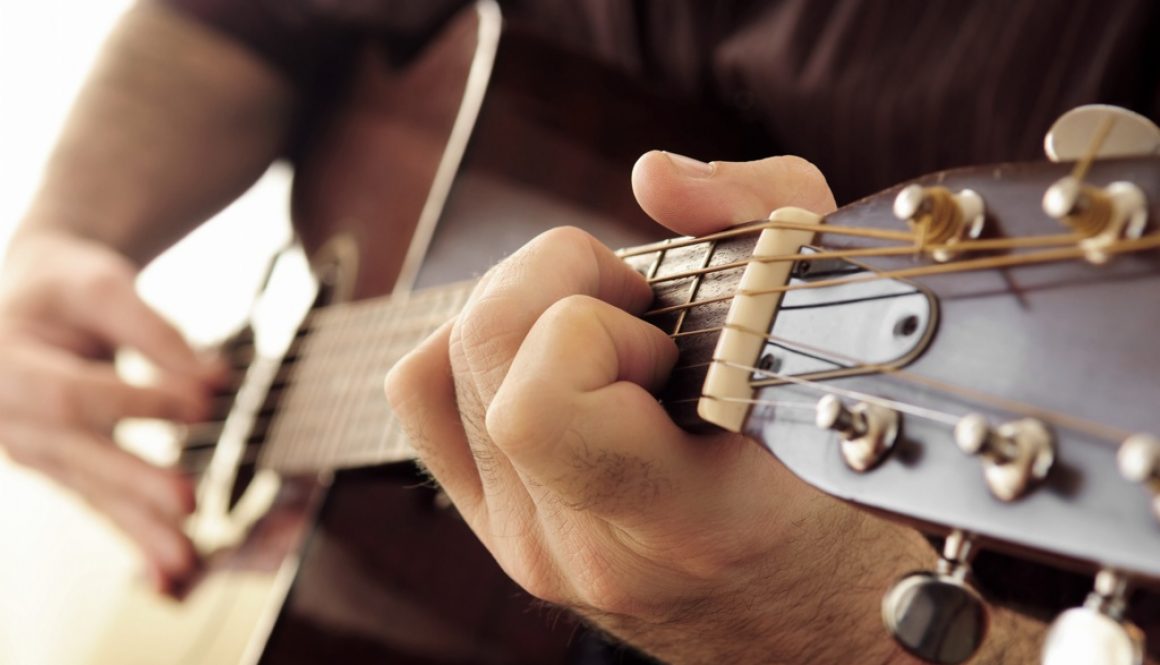Guitar Tip: Faster Chord Changing

Not surprisingly, I’ve gotten many emails about how one goes about getting faster at changing chords. Well, as much as I hate to say it, practice has a lot to do with it. Most of us do not use our hands for anything remotely like playing the guitar during the course of our day to day routines. So it should make sense that we need to get as much practice in as we can.
But there is one tip that I’d like to pass on to you. Try to form your chords from the “bottom” up whenever possible. That is, from the bass note to the high note. More often than not, you change chords on the downstroke, so you want to get the lowest notes in place right before you strum. Take a G chord as an example. If you get your fingers on the low E (6th) and A (5th) strings just as you start your strum, you have a lot of time to get that finger on the high E (1st) string before you actually strike it. I know that it may not seem like a lot of time to you right now, but trust me – it is more than enough.
Another thing to remember is to minimize your finger movement whenever possible. If you go over the chord lesson in our first Absolute Beginner piece, you notice that I gave you fingerings deliberately chosen to allow for easy switching between chords. But there is no one correct way. Take the time to try out different things yourself. And also remember that whatever way you come up with, be open to exploring others.
Check out our absolute beginners lesson on chords Absolute Beginners Part 1: Chords.
If you’ve got any questions, we at Guitar Noise are always happy to answer them. Just send any of your questions to David at [email protected]. He (or another Guitar Noise contributor) may not answer immediately but he will definitely answer!
